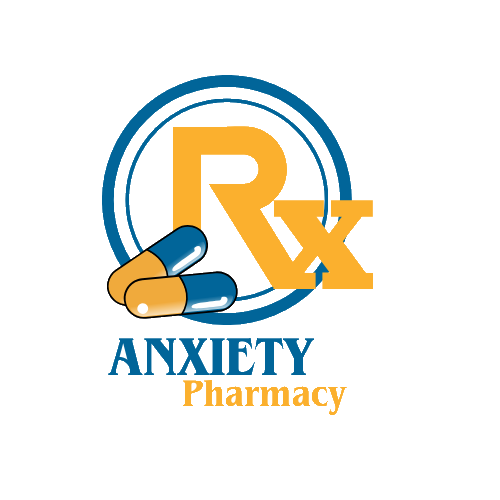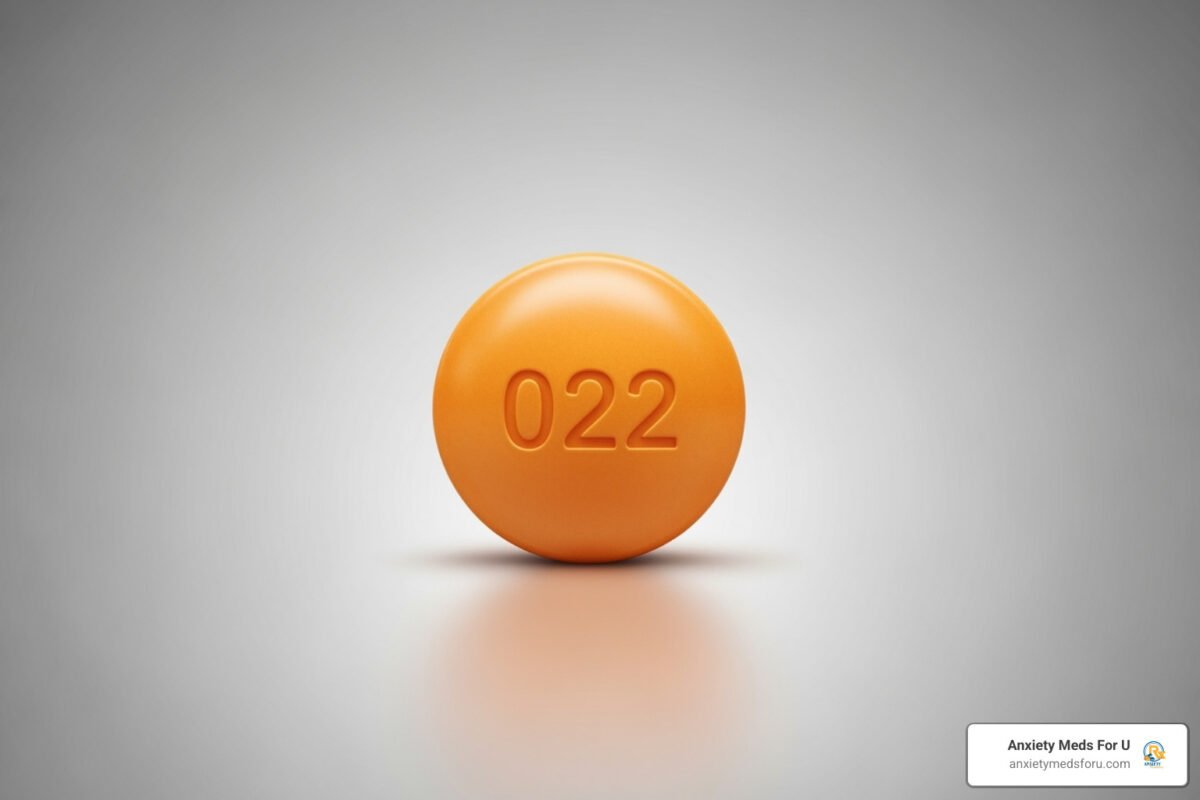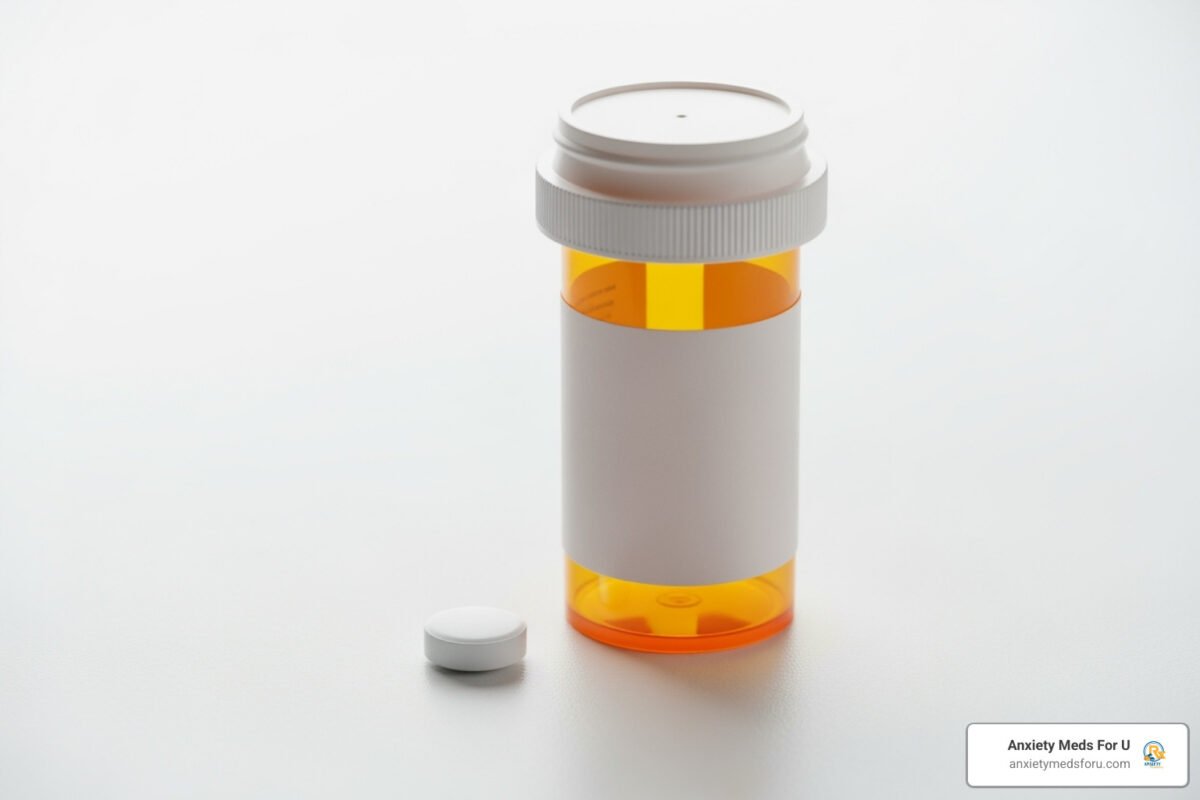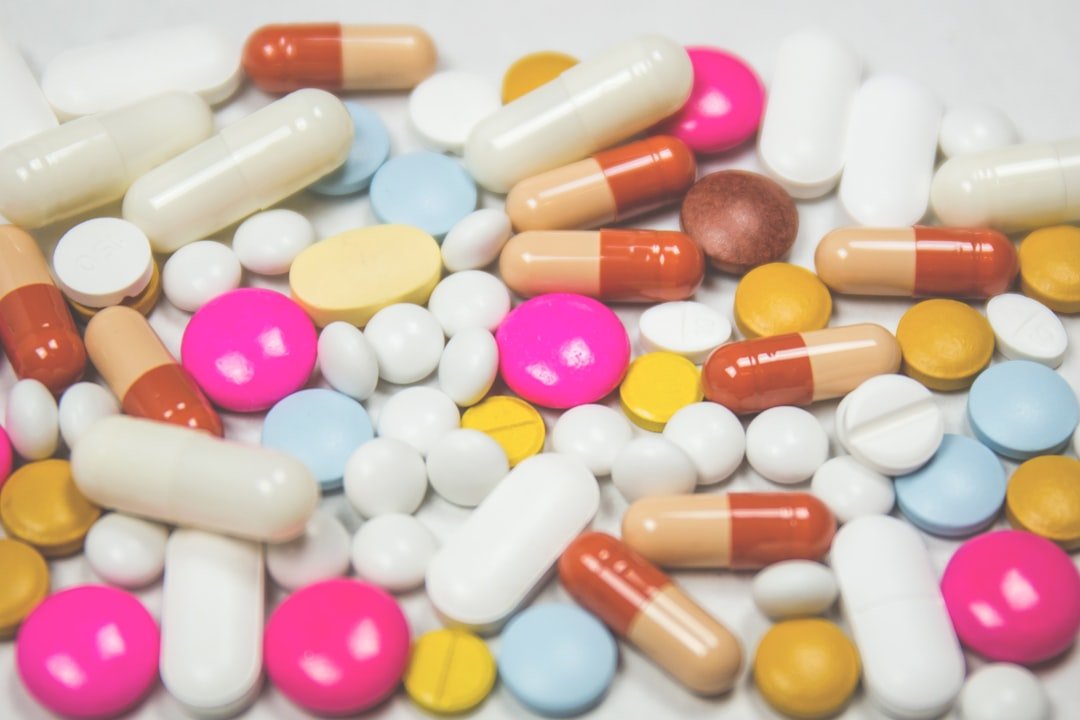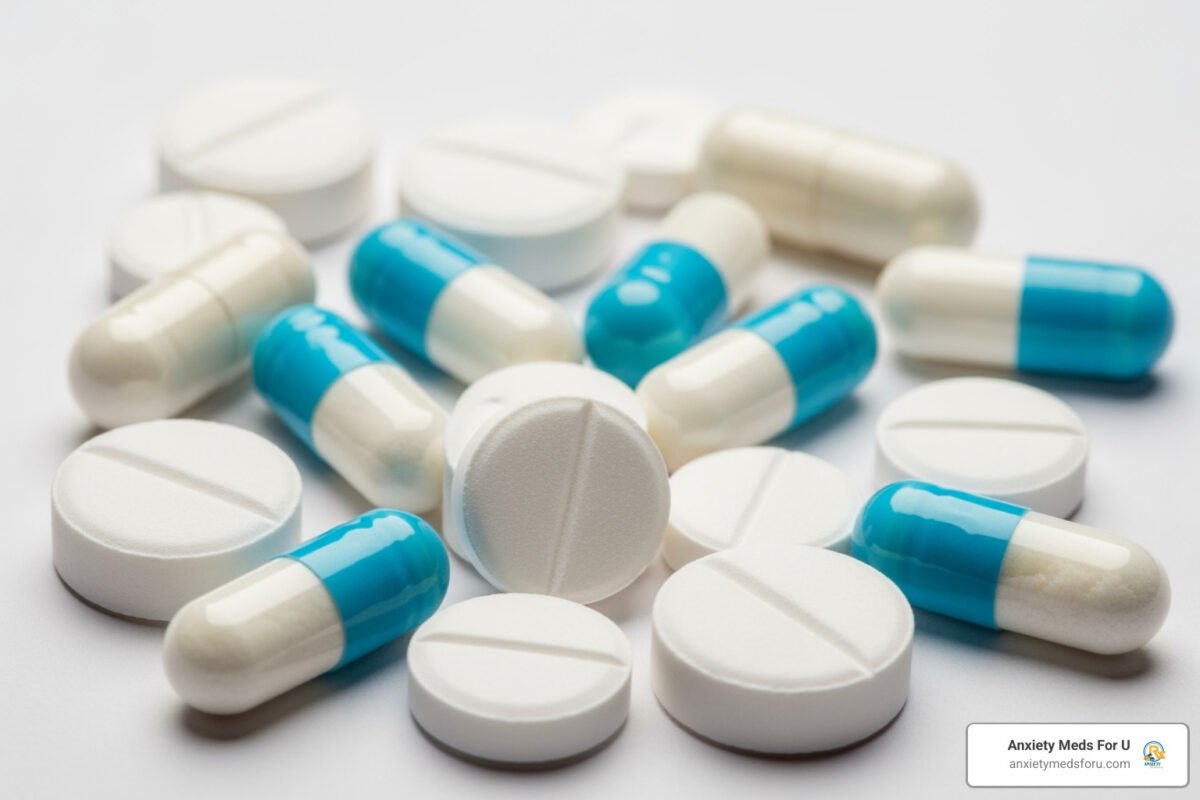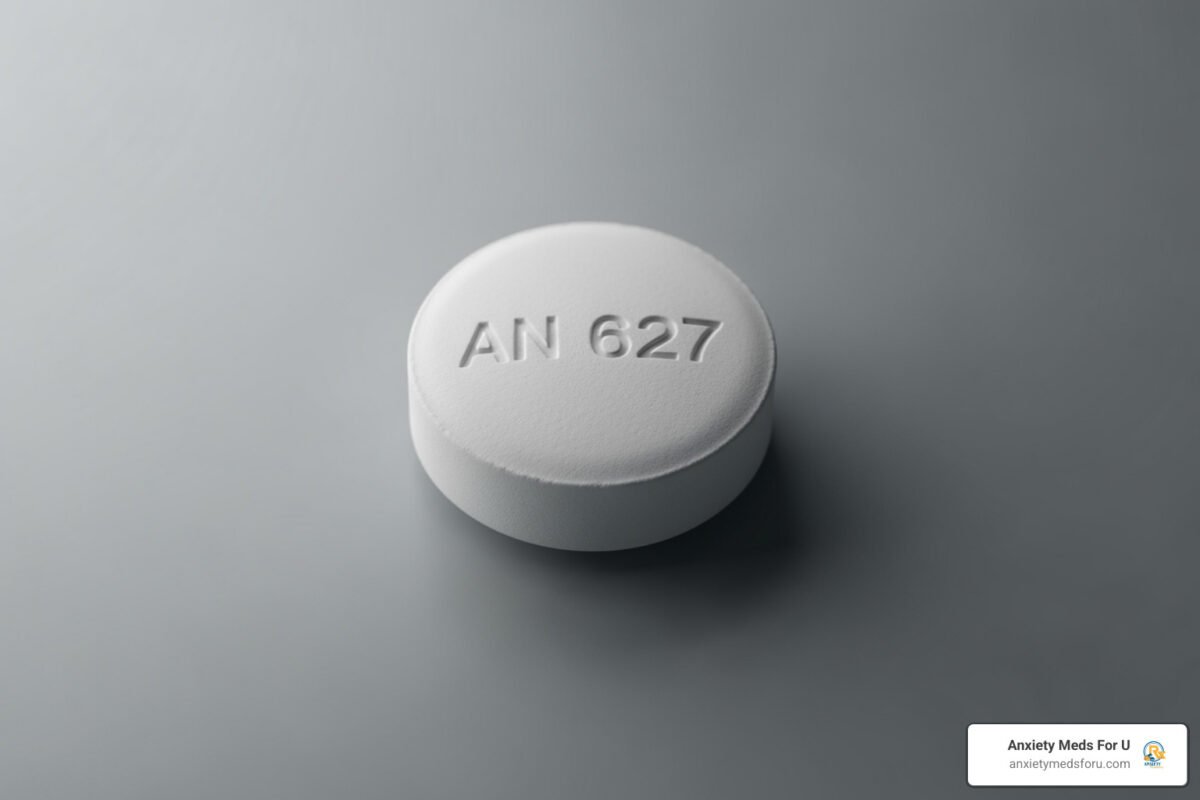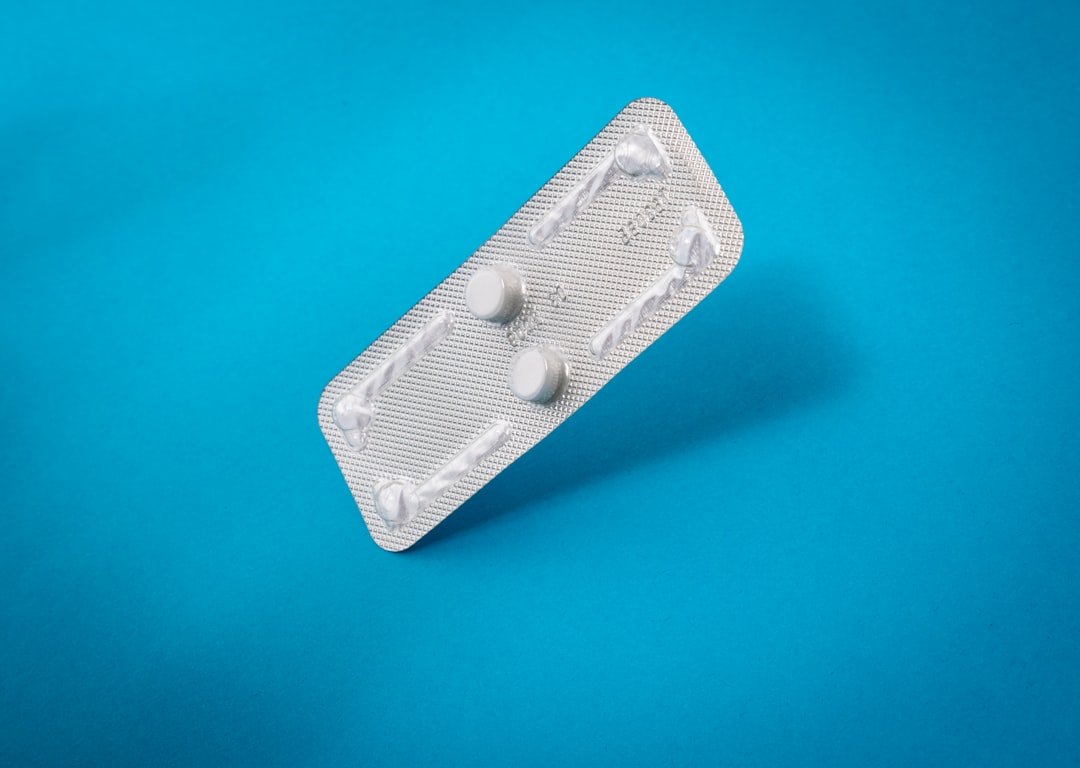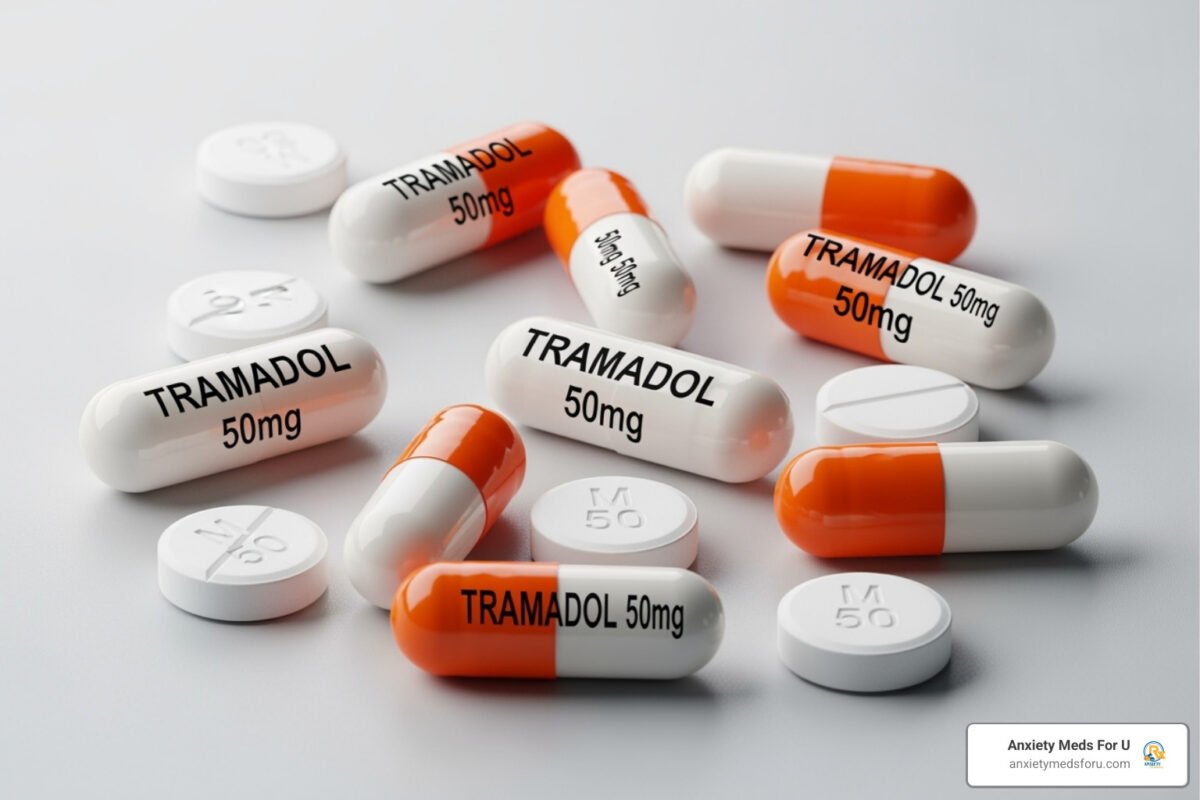What’s in a Class? The Science Behind Tramadol’s Drug Category

Understanding Tramadol’s Unique Classification
Tramadol drug class classification isn’t as straightforward as most medications – this pain reliever sits in a unique category that combines two different drug mechanisms. Here’s what you need to know:
Primary Classifications:
- Opioid analgesic (Schedule IV controlled substance)
- Serotonin-norepinephrine reuptake inhibitor (SNRI)
- Centrally acting pain reliever
Key Facts:
- Used for moderate to moderately severe pain
- Brand name: Ultram
- Reclassified as controlled substance in 2014
- Works through dual mechanism of action
When you’re dealing with persistent pain and need affordable access to effective medication, understanding tramadol’s classification becomes crucial. Unlike traditional opioids that work solely through opioid receptors, tramadol operates through a dual pathway – binding to opioid receptors while also affecting serotonin and norepinephrine levels in your brain.
This unique mechanism explains why tramadol was initially considered “safer” than other opioids. However, by 2014, the DEA had seen enough evidence of abuse potential to reclassify it as a Schedule IV controlled substance. The statistics were telling – more than 16,000 emergency room visits in 2010 alone were linked to tramadol misuse.
I’m John, and through years of helping individuals steer prescription medication access, I’ve seen how understanding the tramadol drug class can help people make informed decisions about their pain management options. My experience with various medication categories has shown me that tramadol’s unique classification often confuses both patients and healthcare providers.
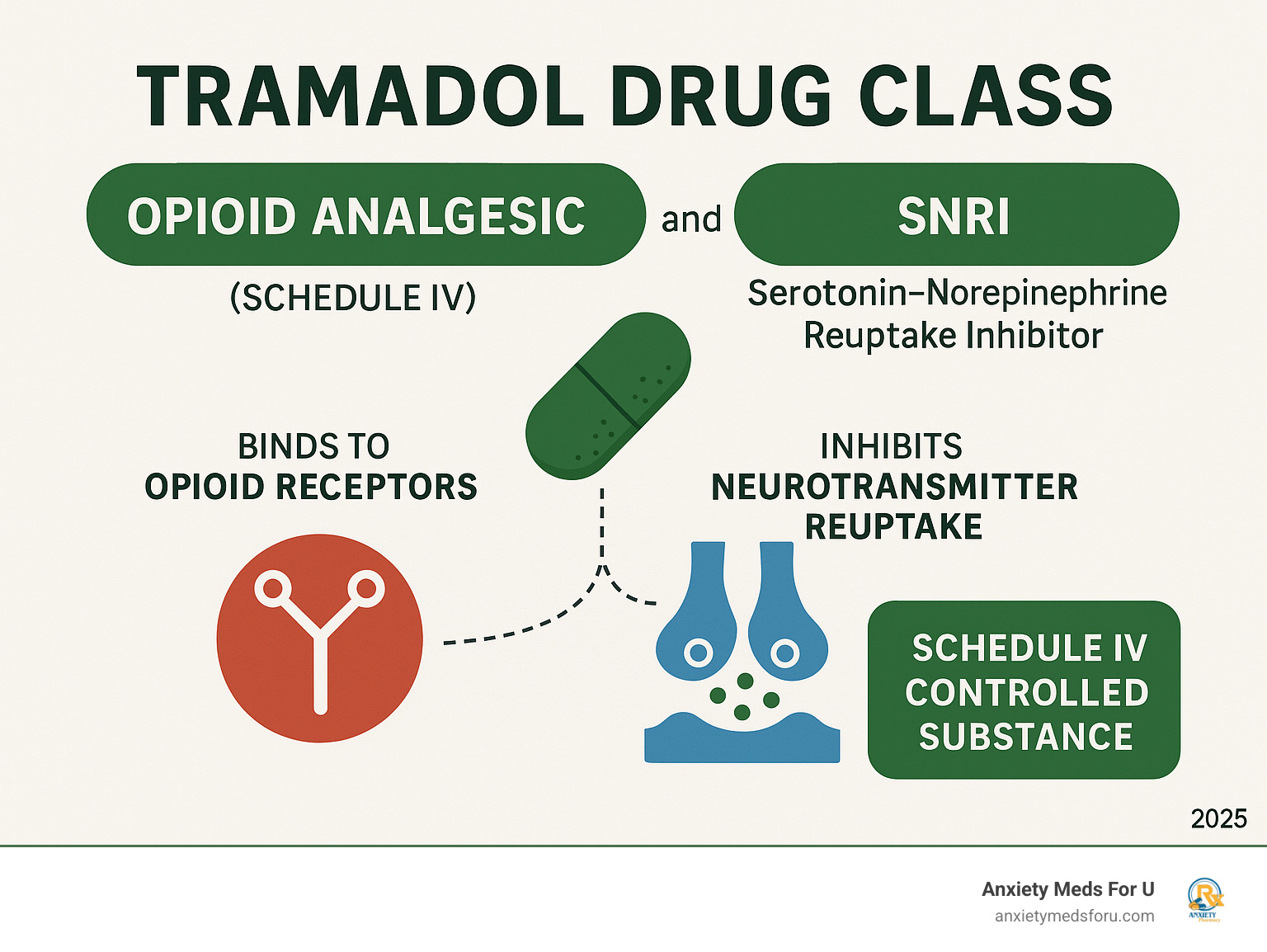
Terms related to tramadol drug class:
Understanding the Tramadol Drug Class and Its Evolution
The story of tramadol drug class classification is like watching a medical mystery unfold. When tramadol first hit the market, doctors thought they’d found the “holy grail” of pain medications – something that worked well but wasn’t as risky as traditional opioids. Boy, were they in for a surprise.

Back in March 1995, when the FDA first approved tramadol, it was labeled as an “atypical analgesic.” The medical community was excited because unlike its stronger opioid relatives, tramadol wasn’t immediately thrown into the controlled substance category. Everyone thought it was safer – a gentler option for people dealing with moderate pain.
But here’s where things get interesting. Tramadol isn’t just your typical opioid analgesic – it’s actually a bit of a overachiever. While it does bind to opioid receptors in your brain (that’s the opioid part), it also works as a serotonin-norepinephrine reuptake inhibitor (SNRI). Think of it as a medication that’s working two jobs at once.
This dual personality initially fooled everyone into thinking tramadol was the safer choice. For the first few years, doctors prescribed it more freely, believing the abuse potential was minimal. However, reality started painting a different picture pretty quickly.
The Drug Enforcement Administration (DEA) began noticing troubling patterns. Emergency room visits related to tramadol misuse started climbing. By 2010, hospitals were seeing over 16,000 ER visits linked to people using tramadol in ways it wasn’t intended. That’s when the medical community realized they might have underestimated this “gentle” pain reliever.
The wake-up call came in July 2014 when the DEA officially reclassified tramadol as a Schedule IV controlled substance. This wasn’t a hasty decision – it was based on mounting evidence that tramadol could indeed lead to abuse, dependence, and withdrawal symptoms. You can read all the official details in the DEA declaration on tramadol scheduling.
This reclassification changed everything. Suddenly, doctors had to follow stricter prescribing guidelines, pharmacies needed improved security measures, and patients found it harder to get refills. The “easy” pain medication had officially joined the ranks of controlled substances.
The Official Tramadol Drug Class: A Schedule IV Controlled Substance
Today’s tramadol drug class classification is crystal clear from a legal standpoint – it’s a Schedule IV controlled substance, and that designation comes with some serious implications. The DEA didn’t make this change lightly; they had compelling reasons backed by real-world data.
The abuse potential became impossible to ignore. Those 16,000 emergency room visits in 2010 weren’t just a fluke – they represented a clear pattern of people misusing tramadol for non-medical reasons. Some folks were taking higher doses than prescribed, others were combining it with alcohol or other drugs, and some were using it recreationally.
Dependence risk turned out to be more significant than originally thought. Your body can become physically dependent on tramadol, meaning it adapts to having the medication around. When that adaptation happens, stopping tramadol suddenly can trigger uncomfortable withdrawal symptoms.
Here’s a sobering statistic: 40% of adverse effects associated with tramadol are actually related to stopping the medication. These withdrawal symptoms aren’t just minor inconveniences – we’re talking about stomach cramps, anxiety, fever, nausea, sweating, and sleep problems that can make someone’s life miserable.
So how does tramadol stack up against other opioids? Schedule IV substances like tramadol are considered to have lower abuse potential than Schedule II drugs like oxycodone or fentanyl. Think of it as a spectrum – tramadol is definitely on the “less risky” end compared to stronger opioids, but it’s not risk-free.
The Schedule IV classification serves as an important reminder that even “milder” pain medications need respect and careful medical supervision. It’s like the difference between a small campfire and a bonfire – both can keep you warm, but both can also burn you if you’re not careful.
How Genetics Influence the Tramadol Drug Class Efficacy
Here’s where the tramadol drug class gets really personal – literally. Your genetic makeup plays a huge role in whether tramadol works well for you or barely makes a dent in your pain. It’s like having a unique key that either fits perfectly in the lock or doesn’t quite work right.
The star of this genetic story is an enzyme called CYP2D6. This little workhorse lives in your liver and has one main job when it comes to tramadol – converting it into something called O-desmethyltramadol (M1). Here’s the kicker: this M1 metabolite is actually more powerful at relieving pain than the original tramadol you swallowed.
Think of tramadol as a mild-mannered superhero that needs to transform into its more powerful alter ego (M1) to really fight your pain effectively. The CYP2D6 enzyme is what triggers that change.
But not everyone’s CYP2D6 enzyme works the same way. Some people are ultra-rapid metabolizers – their enzymes work like speed demons, converting tramadol to M1 super quickly. While this might sound great for pain relief, it can actually be problematic. Too much M1 too fast can lead to serious side effects like breathing problems or seizures.
On the flip side, poor metabolizers have CYP2D6 enzymes that work more like a sluggish old computer. They convert very little tramadol into the active M1 metabolite, which means they might not get much pain relief at all. These folks often feel like tramadol just doesn’t work for them, no matter how much they take.
This genetic variation is pushing medicine toward personalized medicine – the idea that your treatment should be custom to your unique genetic profile. Scientific research on genetic polymorphisms continues to explore how we can use genetic testing to predict who will respond well to tramadol and who might need a different approach entirely.
It’s fascinating to think that something as tiny as genetic variations in a single enzyme can make such a big difference in how a medication works for you. Your genes are literally helping to write your pain management story.
How Tramadol Works: A Dual Mechanism of Action
Understanding how the tramadol drug class works is like watching a well-choreographed dance between different parts of your body’s pain management system. What makes tramadol truly fascinating is that it doesn’t just follow one path to relief – it takes two completely different routes to help you feel better.
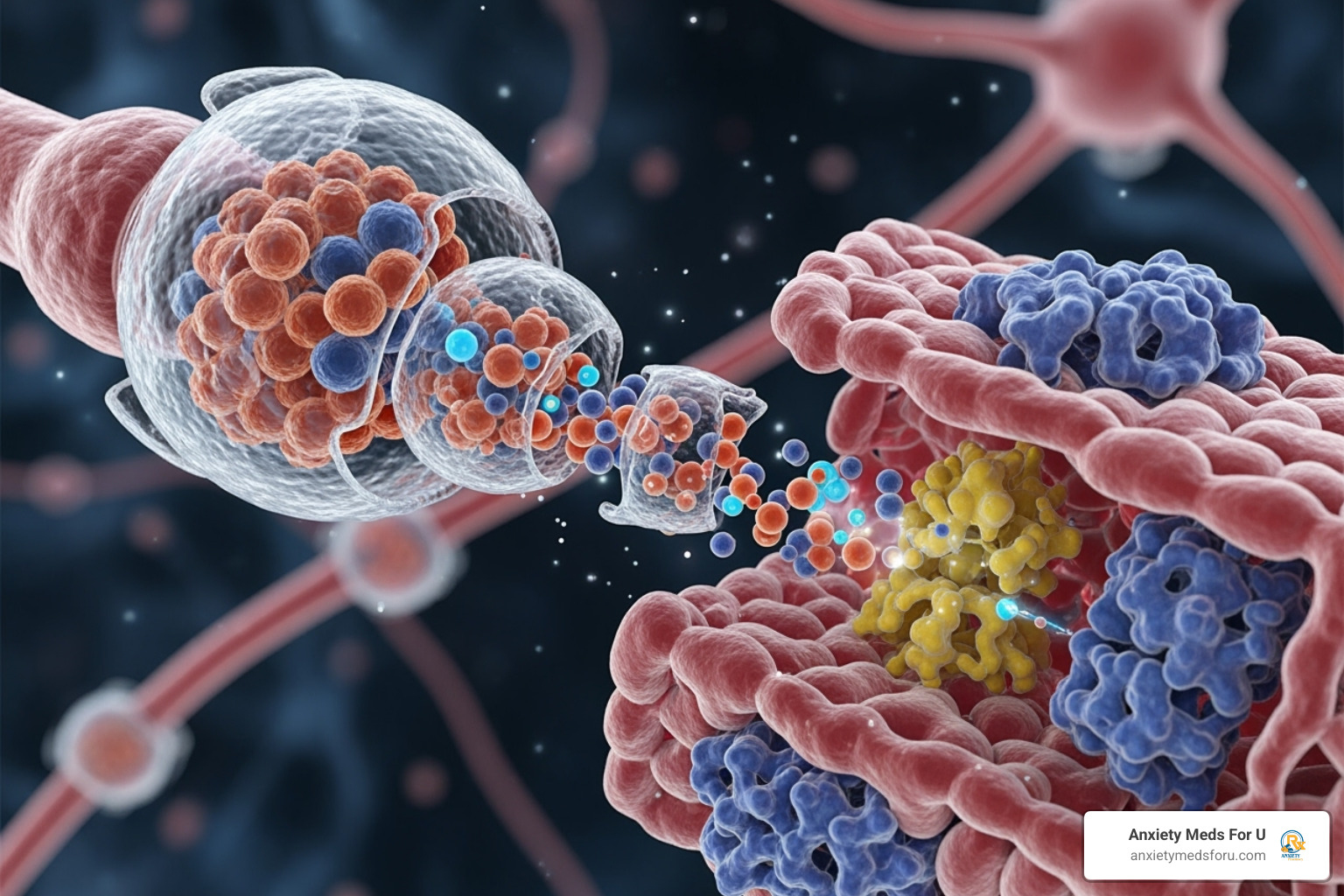
Think of your central nervous system as a busy highway where pain signals travel from the site of injury to your brain. Tramadol sets up two different roadblocks to interrupt this journey, which is why doctors call it an “atypical” opioid.
The First Route: Opioid Receptor Action
The first way tramadol works is through what we call mu-opioid receptor agonist activity. Now, don’t let the fancy name scare you – it’s actually pretty straightforward. Your brain and spinal cord have tiny “docking stations” called opioid receptors. When tramadol (and especially its stronger partner, the M1 metabolite we talked about earlier) arrives, it fits into these receptors like a key in a lock.
Once tramadol binds to these receptors, it essentially tells your nervous system to turn down the volume on pain signals. It’s like having a remote control for your pain – tramadol presses the “mute” button before those uncomfortable sensations can fully register in your consciousness.
The Second Route: Neurotransmitter Magic
Here’s where tramadol gets really clever. While it’s busy working on those opioid receptors, it’s also playing with two important brain chemicals: serotonin and norepinephrine. These neurotransmitters are like your body’s natural mood boosters and pain fighters.
Normally, after these chemicals do their job sending messages between brain cells, your body quickly recycles them through a process called “reuptake.” Tramadol acts as both a serotonin reuptake inhibitor and a norepinephrine reuptake inhibitor, which means it blocks this recycling process.
The result? More of these helpful chemicals stick around in the spaces between your nerve cells, giving your body’s natural pain-blocking systems extra firepower. It’s like keeping your body’s own pain relief squad on the job longer instead of sending them home early.
Why This Dual Action Matters
This two-pronged approach is what makes the tramadol drug class so effective for many types of pain. By working through both opioid pathways and neurotransmitter systems, tramadol can tackle pain that might not respond well to medications that only use one mechanism.
However, this dual action also explains why tramadol has such a unique side effect profile and why it can interact with so many other medications. When you’re affecting multiple systems in your body simultaneously, there’s more potential for unexpected reactions – which is exactly what we’ll explore in our next section.
Risks, Warnings, and Critical Interactions
I wish I could tell you that tramadol is risk-free, but that wouldn’t be honest – and your safety matters too much for sugar-coating. While the tramadol drug class offers effective pain relief through its unique dual mechanism, it comes with serious warnings that we need to discuss openly.
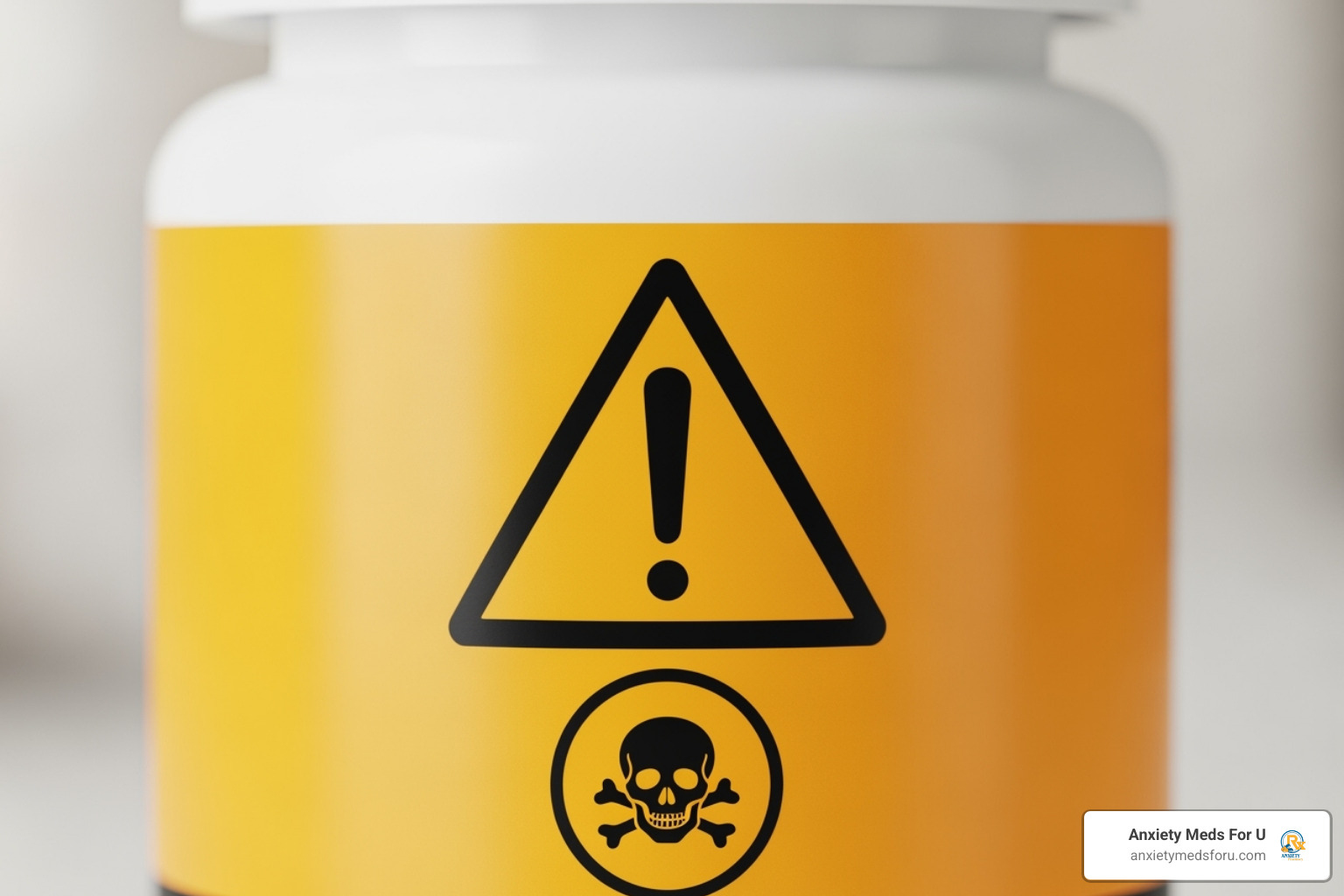
The FDA doesn’t mess around when it comes to serious medication risks. They’ve placed Black Box Warnings on tramadol – think of these as the pharmaceutical equivalent of a flashing red alarm. These warnings exist because tramadol can cause life-threatening problems, even when used exactly as prescribed.
Addiction, abuse, and misuse top the list of concerns. Remember how we talked about tramadol being reclassified as a controlled substance? That happened because people were becoming dependent on it, using it recreationally, or taking dangerous amounts. What seemed like a “safer” opioid turned out to carry real addiction risks.
The most frightening risk is life-threatening respiratory depression – essentially, tramadol can slow or stop your breathing. This isn’t just theoretical; it’s happened to real people. The danger peaks when you first start taking tramadol, increase your dose, or combine it with other medications that slow down your central nervous system.
Parents, listen up: accidental ingestion by children can be fatal. Even one tramadol pill, especially the extended-release version, can kill a child. I cannot stress this enough – keep this medication locked away from curious little hands.
For expecting mothers, there’s another serious concern: neonatal opioid withdrawal syndrome. Babies born to mothers taking tramadol can experience life-threatening withdrawal symptoms after birth. It’s heartbreaking and completely preventable with proper medical guidance.
Beyond these major warnings, you’ll likely experience some common side effects. Dizziness hits many people first, followed by nausea that can really put a damper on your day. Constipation is almost inevitable with opioid medications, and headaches can be frustratingly ironic when you’re taking medication for pain relief. You might also deal with vomiting, drowsiness, and dry mouth.
These everyday side effects won’t kill you, but they can make life pretty miserable. If you’re experiencing severe or persistent problems, don’t tough it out – call your doctor. And if you notice any of those serious Black Box Warning symptoms, get emergency help immediately.
Here’s something important: your experience matters to everyone’s safety. The FDA tracks serious side effects to improve medication safety for all of us. If something scary happens, please report serious side effects to the FDA. Your report could prevent someone else from going through the same thing.
Drug and Alcohol Interactions
Let me be blunt about mixing tramadol with other substances: it’s like playing Russian roulette with your breathing. The tramadol drug class affects your central nervous system in complex ways, and adding other substances to the mix can create dangerous – sometimes fatal – combinations.
Alcohol is absolutely off-limits while taking tramadol. I’m not talking about “be careful” or “limit yourself to one drink.” I mean zero alcohol – no beer, no wine, no cocktails, and definitely no prescription medications containing alcohol. When alcohol meets tramadol in your system, both substances amplify each other’s sedating effects. Your breathing can slow to dangerous levels or stop entirely.
Think of it this way: if tramadol puts a light blanket over your respiratory system, alcohol adds a heavy winter comforter on top. Together, they can suffocate your body’s ability to get the oxygen it needs.
Antidepressants create a particularly tricky situation because tramadol acts like one itself. When you combine tramadol with SSRIs like Prozac, Zoloft, or Lexapro, you’re flooding your brain with too much serotonin. This can trigger serotonin syndrome, which we’ll discuss in detail shortly.
MAOIs are even more dangerous. These older antidepressants like Nardil or Parnate are completely incompatible with tramadol. If you’ve taken an MAOI within the last 14 days, tramadol is off the table entirely. The combination can cause severe serotonin toxicity that can be life-threatening.
Even seemingly harmless things like migraine medications (triptans), anxiety drugs (buspirone), and herbal supplements like St. John’s Wort can create problems when mixed with tramadol.
Benzodiazepines and other CNS depressants represent another major danger zone. Medications like Xanax, Ativan, Valium, along with other opioids, sleep aids, muscle relaxants, and tranquilizers all slow down your central nervous system. When you add tramadol to this mix, the effects don’t just add up – they multiply.
People have died from these combinations. The sedation becomes so profound that breathing slows to a crawl or stops completely. Coma and death are real possibilities, not just medical textbook warnings.
This is why honesty with your healthcare provider isn’t just recommended – it’s essential for your survival. Tell them about every medication, supplement, and substance you use, including over-the-counter drugs and recreational substances. They’re not there to judge you; they’re there to keep you alive.
Serotonin Syndrome and Seizure Risk
Two particularly scary complications deserve special attention when we talk about tramadol’s risks: serotonin syndrome and seizures. Both can be life-threatening, and both are more likely because of tramadol’s unique place in the tramadol drug class.
Serotonin syndrome happens when your brain gets flooded with too much serotonin. Since tramadol increases serotonin levels and many people take other medications that do the same thing, this toxic buildup can occur faster than you might expect.
The symptoms start subtly but can escalate quickly. Mental changes like anxiety, restlessness, and confusion might be your first clues. You might feel agitated or even experience hallucinations. Physical symptoms follow: profuse sweating, uncontrollable shivering, racing heart, high blood pressure, dilated pupils, and fever that can spike dangerously high.
Your muscles might start acting up with spasms, tremors, or rigidity. Your reflexes become hyperactive, and you might experience stomach problems like nausea, vomiting, and diarrhea. If you notice these symptoms, especially if you’re taking tramadol with antidepressants or other serotonergic medications, don’t wait to see if they get better – get emergency medical help immediately.
Seizures represent another serious risk because tramadol lowers your seizure threshold. Think of your seizure threshold as a protective barrier in your brain. Tramadol weakens that barrier, making seizures more likely to break through. Higher doses create higher risks, but seizures can happen even at prescribed doses.
You’re at extra risk if you have a history of seizures, head injuries, metabolic disorders, or if you’re taking other medications that also lower the seizure threshold. Some antidepressants like Wellbutrin, other opioids, and certain antipsychotic medications can all contribute to this risk.
Tramadol overdose is a medical emergency that combines the worst of both worlds. You might see severe drowsiness that progresses to complete unresponsiveness, pinpoint pupils that look like tiny dots, and breathing that becomes slow, shallow, or stops entirely. The skin turns cold and clammy, the heartbeat slows dramatically, and muscle weakness makes it impossible to respond or wake up.
Naloxone (Narcan) can be lifesaving in tramadol overdoses, but it’s not a perfect solution. While naloxone rapidly reverses opioid effects, it might not completely counteract tramadol’s non-opioid effects. In some cases, it could even increase seizure risk during a tramadol overdose.
If you’re at higher risk for overdose – maybe you’re on higher doses or taking other CNS depressants – your doctor might prescribe naloxone for emergencies. Make sure your family or caregivers know how to recognize an overdose and use naloxone if needed. But remember: naloxone is a bridge to emergency care, not a cure. Even if naloxone helps, you still need immediate medical attention.
The bottom line? These aren’t rare, theoretical risks – they’re real dangers that have affected real people. Respect tramadol’s power, follow your prescribed dosing exactly, and never hesitate to seek help if something feels wrong.
Practical Guidance for Safe Tramadol Use
Using tramadol safely isn’t just about following the bottle instructions – it’s about understanding how this unique medication fits into your daily life while keeping you and your loved ones protected. Since tramadol drug class combines both opioid and antidepressant properties, safe use requires a bit more attention than your typical pain reliever.
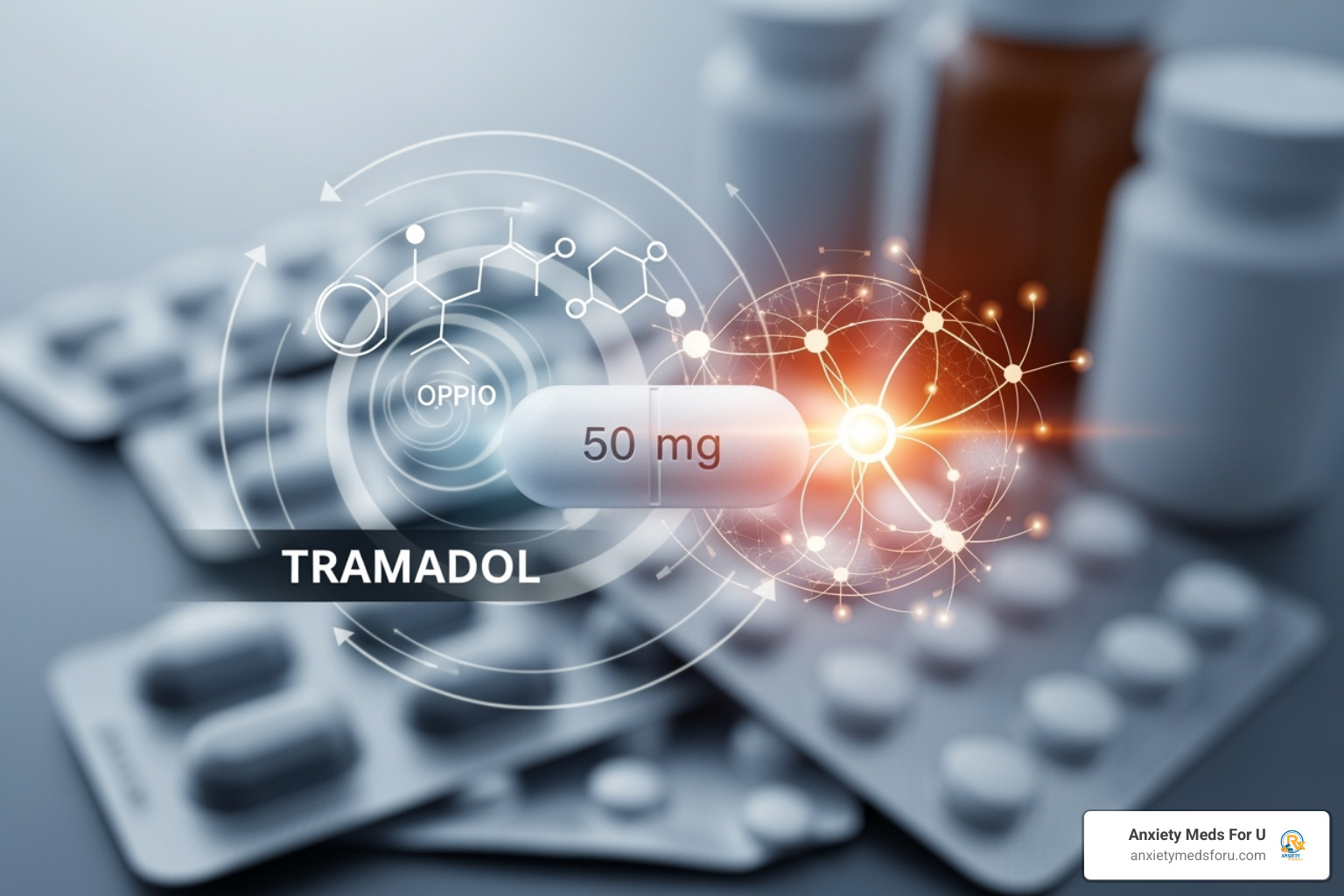
Getting Your Dosage Right
The key to safe tramadol use starts with understanding which type you’re taking. Immediate-release tramadol is your go-to for sudden pain flare-ups or short-term issues. Most adults start with 50-100 mg every 4 to 6 hours when pain strikes, but never exceed 400 mg in a single day. Think of it as your “as-needed” friend – there when you need it, resting when you don’t.
Extended-release tramadol is a completely different animal. This version is designed for people dealing with chronic, around-the-clock pain that just won’t quit. You’ll typically take one dose daily at the same time, starting around 100 mg and potentially increasing to 300 mg under your doctor’s guidance. Here’s the crucial part: never crush, chew, or break these pills. They’re designed to release slowly over time, and breaking them can dump the entire dose into your system at once – which can be dangerous.
When You Miss a Dose
Life happens, and sometimes we forget to take our medication. With immediate-release tramadol, take your missed dose as soon as you remember, unless your next dose is coming up soon. In that case, just skip it and continue your normal schedule. Never double up to “catch up.”
For extended-release versions, the timing is more critical since you’re maintaining steady levels in your system. If you remember within a few hours, go ahead and take it. But if it’s getting close to your next scheduled dose, skip the missed one and get back on track. Your body will thank you for maintaining that steady rhythm.
Recognizing and Responding to Overdose
Tramadol overdose is serious business, and knowing the warning signs could save a life. Watch for extreme drowsiness that won’t respond to loud noises or shaking, pupils that look like tiny pinpoints, and most critically, breathing that becomes slow, shallow, or stops altogether. Cold, clammy skin and an inability to wake someone up are red flags that demand immediate action.
If you suspect an overdose, call 911 immediately. If naloxone (Narcan) has been prescribed and is available, use it as directed, but don’t let it replace emergency medical care. While naloxone can reverse tramadol’s opioid effects, it might not address everything, and professional medical supervision is essential. For poisoning questions, Poison Control is also available 24/7.
Smart Storage Solutions
Proper storage of tramadol isn’t just about keeping it effective – it’s about keeping everyone safe. Store your medication in its original container at room temperature, away from bathroom humidity and kitchen heat. The most important rule? Keep it up and away from children and pets. Even child-resistant caps aren’t foolproof, so consider a locked medicine cabinet or box.
Tramadol is now a controlled substance for good reason. Store it securely to prevent theft or accidental access by visitors, teenagers, or anyone who might be tempted to experiment with it.
Responsible Disposal
When you no longer need tramadol or it expires, don’t just toss it in the trash or flush it down the toilet. The best option is finding a medication take-back program through your local pharmacy or police department. These programs safely destroy unused medications without harming the environment.
If a take-back program isn’t available, mix your unused pills with something unappetizing like used coffee grounds or cat litter, seal the mixture in a plastic bag, and throw it in your regular trash. This makes the medication unattractive to anyone who might go through your garbage. For detailed disposal guidance, check out the medication disposal guidelines.
By following these practical steps, you’re not just protecting yourself – you’re being a responsible member of your community and helping ensure that tramadol remains available for people who genuinely need effective pain relief.
Frequently Asked Questions about Tramadol
I’ve been helping people steer medication questions for years, and I’ve noticed that tramadol tends to spark more confusion than most other pain relievers. That’s completely understandable – its unique tramadol drug class classification makes it different from what people typically expect from pain medication. Let me clear up the most common questions I hear.
Is tramadol a narcotic or an opioid?
This question comes up in almost every conversation I have about tramadol, and honestly, I understand why it’s confusing. The terms “narcotic” and “opioid” get tossed around interchangeably, but they don’t actually mean the same thing.
Yes, tramadol is definitely an opioid. When you take tramadol, its primary pain-fighting power comes from binding to those mu-opioid receptors in your central nervous system – the exact same mechanism that makes morphine or oxycodone work. The main difference? Tramadol is about one-tenth as potent as morphine, dose for dose. Plus, that active metabolite we talked about earlier (M1) actually has an even stronger grip on those opioid receptors.
Now, about the “narcotic” label – that’s where things get a bit messy. Historically, “narcotic” meant any drug that made you sleepy or drowsy. Over time, it became more of a legal term that got slapped on illicit drugs and substances with abuse potential. While tramadol is legally classified as a controlled substance (Schedule IV, remember?), the medical community prefers calling it an “opioid” because that’s more precise.
So if your doctor calls it an opioid and your neighbor calls it a narcotic, you’re both hearing correct information – just from different perspectives. The tramadol drug class complexity comes from its dual action: yes, it hits those opioid receptors, but it’s also messing with your serotonin and norepinephrine levels, which gives it those unique central nervous system effects we’ve discussed.
Why is tramadol considered a controlled substance?
When tramadol first hit the market in 1995, it wasn’t even classified as a controlled substance. The thinking was, “Hey, this seems safer than other opioids – let’s not put too many restrictions on it.” Well, that didn’t age well.
The reality check came when the numbers started rolling in. More than 16,000 emergency room visits in 2010 alone were linked to people using tramadol for non-medical purposes. That’s a pretty clear sign that something initially considered “low-risk” was actually causing serious problems.
The dependence potential became impossible to ignore. Just like other opioids, tramadol can make your body physically dependent on it. When people tried to stop taking it, they weren’t just dealing with returning pain – they were experiencing genuine withdrawal symptoms like anxiety, sweating, stomach cramps, and tremors. In fact, 40% of all adverse effects associated with tramadol are linked to people trying to discontinue it. That’s a staggering number.
The DEA also noticed that tramadol was becoming valuable on the illicit market. Its “milder” reputation made it an attractive target for diversion from legitimate medical channels. People were seeking it out specifically because they thought it was a “safer” way to get high or manage their pain without proper medical supervision.
By 2014, the evidence was overwhelming. The DEA reclassified tramadol as a Schedule IV controlled substance, putting it in the same category as medications like Xanax and Ambien. This wasn’t about punishment – it was about recognition. The classification acknowledged that tramadol, despite its unique properties, carries real risks that require careful oversight, stricter prescribing practices, and greater awareness from both doctors and patients.
What are the main warnings for taking tramadol?
This is where I always tell people to pay extra attention, because tramadol’s warnings aren’t just legal fine print – they’re based on real-world experiences that can be life-threatening. The FDA has issued Black Box Warnings for tramadol, which is their way of saying “this is serious stuff.”
Addiction, abuse, and misuse top the list, and this might surprise people who still think of tramadol as the “gentle” opioid. Despite being considered weaker than drugs like oxycodone, tramadol can absolutely lead to addiction. I’ve seen people who started with legitimate prescriptions end up struggling with dependence. The key is using it exactly as prescribed and being honest with yourself and your doctor about any signs of developing problems.
Life-threatening respiratory depression is the scariest risk. Tramadol can slow down or even stop your breathing, and this can be fatal. The danger is highest when you first start taking it, after your doctor increases your dose, or if you’re mixing it with other medications that also slow down your central nervous system – things like benzodiazepines, alcohol, or other opioids.
The risks in children are particularly concerning. Tramadol generally isn’t recommended for kids under 12, and it’s specifically contraindicated for children under 18 who’ve had their tonsils or adenoids removed. Children’s bodies process tramadol unpredictably, and their vulnerability to opioid effects makes this medication potentially dangerous for them.
Pregnancy and breastfeeding present their own serious challenges. If you use tramadol regularly during pregnancy, your baby can be born with Neonatal Opioid Withdrawal Syndrome (NOWS) – a life-threatening condition that causes irritability, excessive crying, tremors, and feeding problems in newborns. For breastfeeding mothers, tramadol passes into breast milk and can cause excessive sleepiness, breathing difficulties, and limpness in babies. The FDA specifically advises against using tramadol while breastfeeding.
Finally, there are those serotonin syndrome and seizure risks we’ve talked about extensively. Tramadol’s dual action means it can push your serotonin levels too high when combined with antidepressants or other serotonergic drugs. It also lowers your seizure threshold, making seizures more likely, especially if you have a history of them or take certain other medications.
These warnings aren’t meant to scare you away from effective pain treatment – they’re meant to help you use tramadol safely and make informed decisions with your healthcare provider. Understanding these risks is part of being a responsible patient.
Conclusion: Making Informed Decisions About Your Pain Management
After diving deep into the complexities of the tramadol drug class, we hope you feel more equipped to steer your pain management journey with confidence and clarity. This isn’t just another pain medication sitting on pharmacy shelves – tramadol represents a fascinating intersection of opioid science and neurotransmitter therapy, working through dual pathways that make it both effective and uniquely challenging.
What makes tramadol special is precisely what makes it complicated. Its dual-class nature as both an opioid analgesic and a serotonin-norepinephrine reuptake inhibitor gives it pain-fighting power from two different angles. But this same complexity means we need to be extra thoughtful about drug interactions, genetic factors, and individual responses. Your CYP2D6 genetic makeup literally determines how your body processes this medication – making your experience potentially very different from someone else’s.
The journey from tramadol’s initial “safer opioid” reputation to its 2014 reclassification as a Schedule IV controlled substance tells us an important story. Real-world data doesn’t lie – those 16,000 emergency room visits in 2010 alone showed us that even medications with “lower abuse potential” demand our respect and caution.
Your healthcare provider is your most valuable ally in this process. They understand your complete medical picture, can interpret how tramadol might interact with your other medications, and can monitor you for both effectiveness and safety. Don’t hesitate to ask questions, report side effects, or discuss concerns. Pain management is a partnership, not a one-size-fits-all prescription.
Your role as a patient is equally crucial. Taking tramadol exactly as prescribed, storing it safely away from children and others, and being honest about how it’s affecting you – both positively and negatively – helps ensure the best possible outcome. Watch for those warning signs we discussed, from respiratory depression to serotonin syndrome symptoms.
For those seeking convenient access to pain relief medications, Anxiety Meds For U offers discreet and fast delivery options that respect your privacy while providing the medications you need. We understand that managing pain shouldn’t add stress to your life.
Find your pain relief solution
Informed patients make better decisions. You now understand tramadol’s unique place in pain management – use this knowledge wisely, stay in close communication with your healthcare team, and prioritize your safety above all else. Your pain deserves treatment, and you deserve to receive that treatment safely and effectively.
